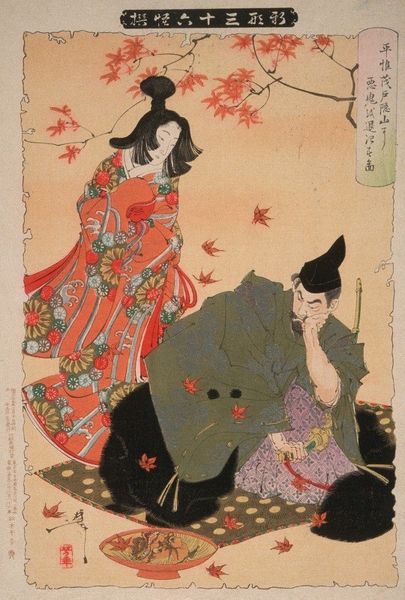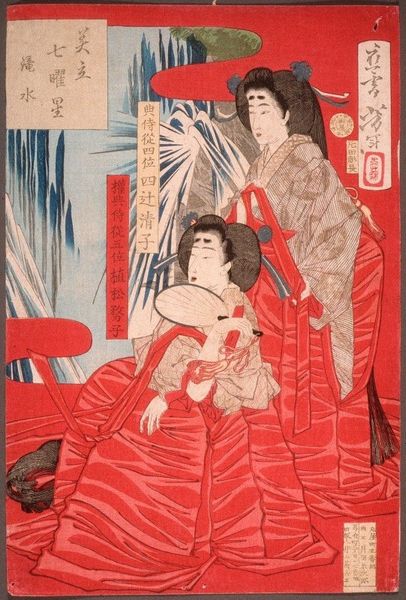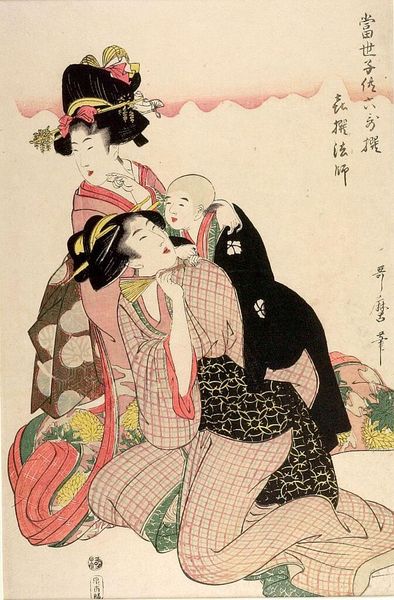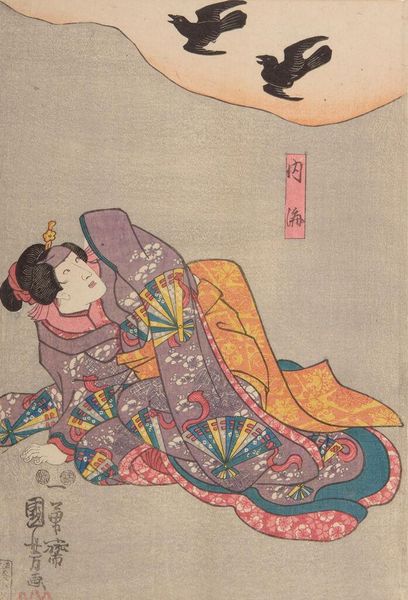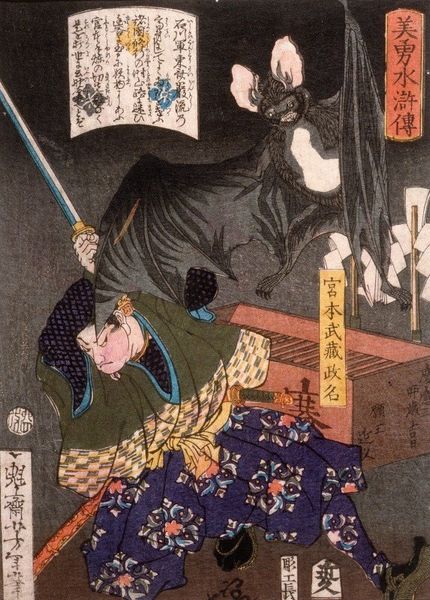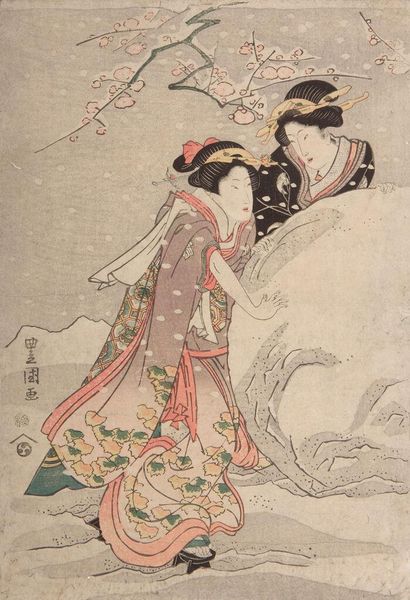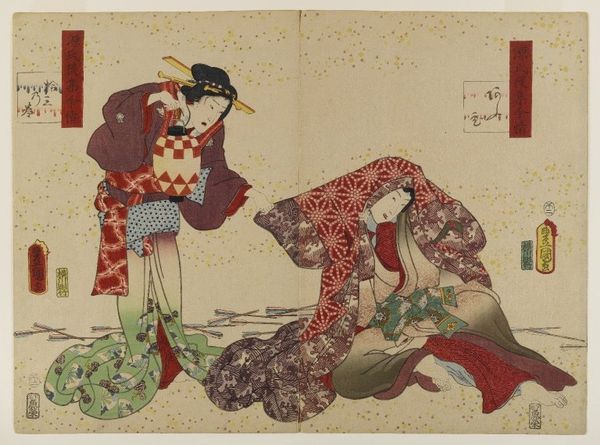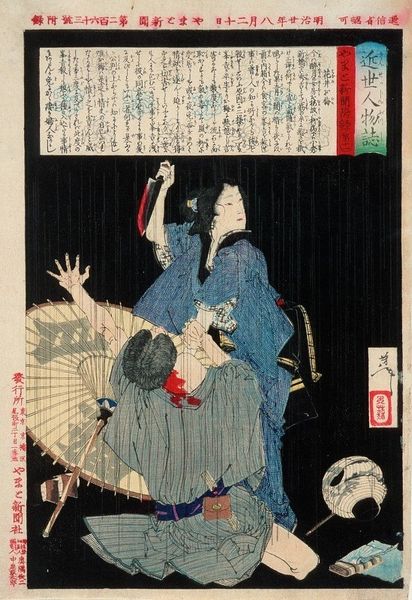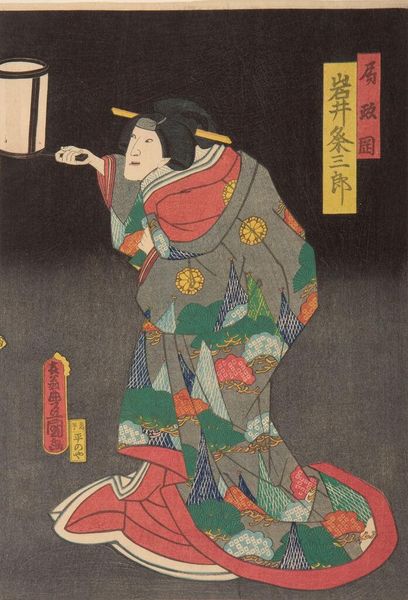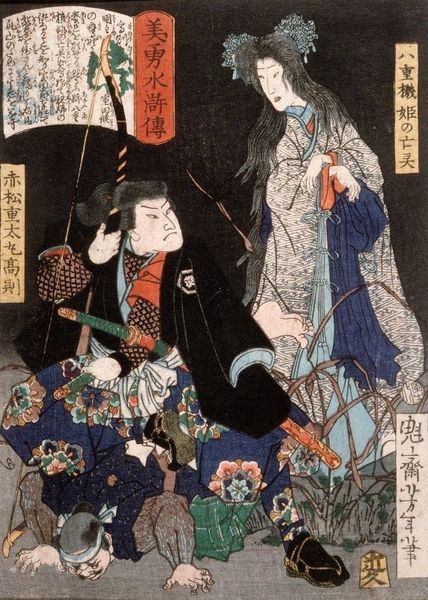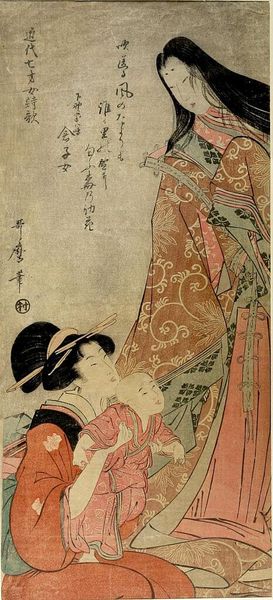
Copyright: Public Domain: Artvee
Curator: Yoshitoshi's 1865 woodblock print, "Iga no Tsubone with Tengu, the Spirit of Fujiwara no Nakanari," immediately plunges us into a world of high drama. The romantic styling combined with the supernatural elements creates a really arresting image, don't you think? Editor: Absolutely arresting. The oppressive darkness combined with the horrified expression of the woman...it’s evocative of a nightmare. Curator: That's fitting given the narrative. We see Iga no Tsubone, a lady-in-waiting, confronted by the vengeful spirit of Fujiwara no Nakanari, manifested as a tengu, a mountain goblin. The tengu's form is quite striking, especially that incredibly long nose which has historical ties to his character and origin. The print captures a moment heavy with cultural weight, blending folklore with courtly intrigue. Editor: Indeed, the woodblock technique, common in ukiyo-e, contributes to the theatrical quality. Think about the historical context, how these prints circulated, bringing stories of the supernatural, often laden with political or social commentary, to a wider audience. Was there anything controversial about this story? Curator: Well, portraying historical figures in such a sensational light certainly had implications. The Tengu spirit could represent suppressed anxieties or past wrongdoings resurfacing. Also, the dramatic contrast in the composition really catches the eye; light versus dark. That accentuates the palpable sense of dread, and it certainly would have been effective at the time it was produced. Editor: That dark backdrop definitely focuses all the viewer's attention on the figures. We can even consider how these prints, initially accessible to a broad public, later found their way into elite collections, shifting their socio-cultural significance over time. What do you think contemporary viewers would see in an image like this, with its emphasis on visual storytelling? Curator: I suspect it speaks to a very deep need to connect with powerful imagery, whether or not viewers are completely conscious of all the symbolism. Also, it underscores the lasting human fascination with spirits. This print's journey mirrors our evolving relationship with the past, showing how visual narratives persist and transform across generations. Editor: Absolutely. It seems as if this piece encapsulates history in the popular consciousness. Yoshitoshi wasn't just illustrating a story; he was contributing to an ongoing cultural conversation. Curator: I agree completely. And the work offers us so many interesting layers for discussion.
Comments
No comments
Be the first to comment and join the conversation on the ultimate creative platform.
